Microsoft 2022 in review: Wins, fails, and WTF moments - dowdywoulty
Microsoft's 2017 may as well be called the year the company turned away from the consumer and, sadly, back toward the enterprise.
This sometime twelvemonth was notable for two casualties: Microsoft's phone business finally died, as did Groove Music, the music subscription table service that Microsoft abandoned in favor of Spotify. In fact, you could argue that Microsoft's software and services didn't succeed nearly as well as its ironware, where a new generation of Surfaces and Xbox One consoles were generally well conventional.
But ennui clouded all but the brightest spots in Microsoft's roadmap: the Show u Laptop, Surface Book 2, and the Windows 10 Fall Creators Update. IT didn't help that direction seemed to feel that staid enterprise Azure and Office 365 diagrammatic Microsoft's future, either. Now, question marks hang over Microsoft's plans for 2018. The electric discharge is there, but will consumers care?
Fail: Windows phones, Split (2000-2017)
 Melissa Riofrio
Melissa Riofrio Account will William Tell us that Windows phones died at about 17 years aged, dating back to Pocket PC 2000's release in April of 2000. Since then, Microsoft's mobile aspirations changed names several multiplication, including a ladder of "Windows Phone" releases. At one time, Microsoft was nearly the dominant smartphone OS, just a barbarous hertz of declining evolution resources and user migration to Android and iOS in the end doomed it. Windows 10 Mobile River was the last, cursed incarnation, slow with it the once-uppercase Lumia smartphone lineup, as swell as several partnerships with third-political party earpiece makers that ultimately went nowhere. Today, it lives on in look, together with numerous Microsoft-branded apps written for iOS and Android.
Pull ahead: Xbox One X
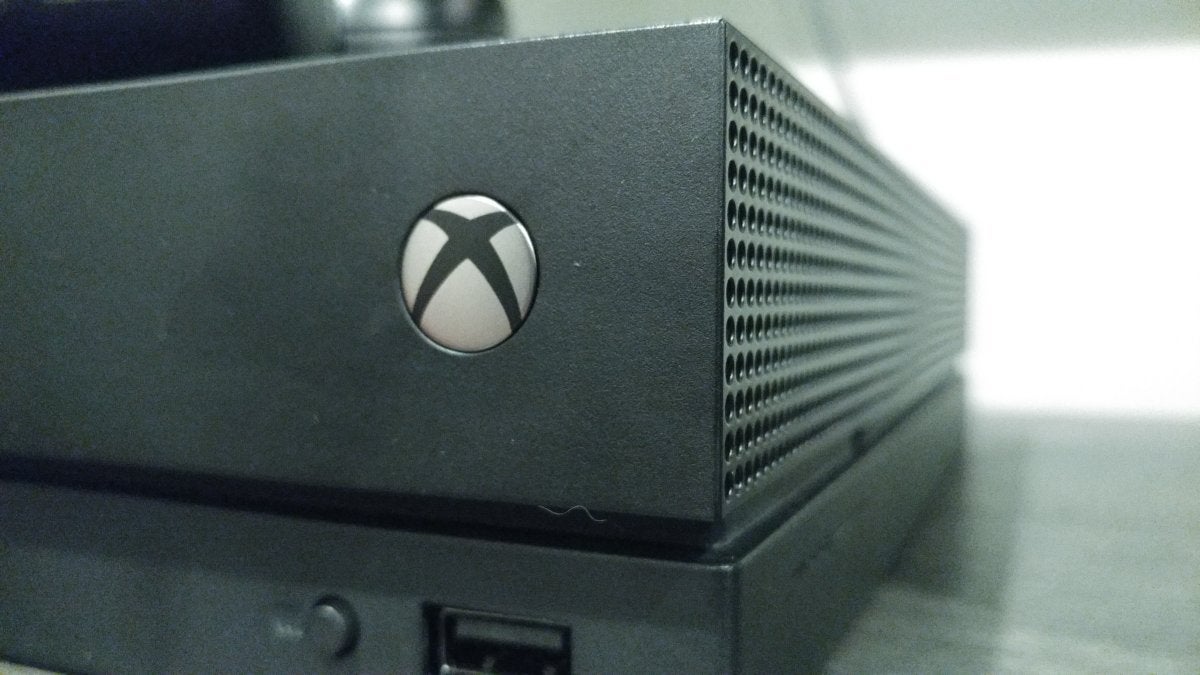 IDG / Hayden Dingman
IDG / Hayden Dingman Well, the hardware, in any event.
Microsoft launched the most powerful cabinet in beingness, the Xbox One X, to go with the Xbox One S. But the story's the same: Without the games, you're nothing. Microsoft scored a major exclusive withThespian Unknown's Battlegrounds($30 on Amazon), the hottest game of 2017 (and one that hardly runs tolerably happening the Xbox One X), plus more or less multi-platform games that run attractively. But Nintendo's resurgence and Sony's strong stable will make this holiday season a sturdy one. Give Microsoft credit, though: Its Netflix-like Game Pass, unmatched backward-compatibility efforts, and its underappreciated stable of indie games beef up the platform.
Fail: Windows 10 Creators Update
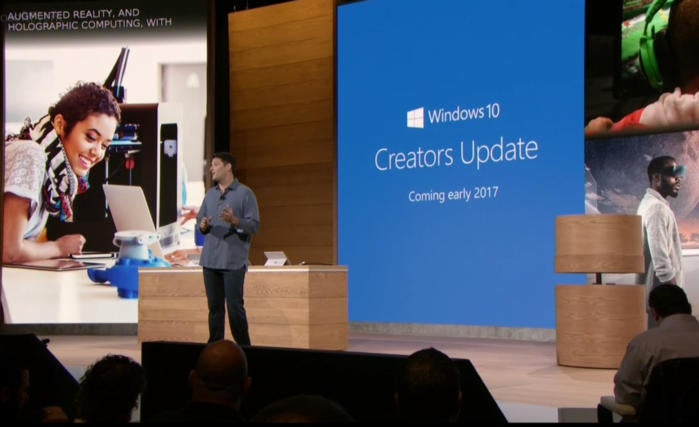 Microsoft
Microsoft As positive as I was with the novel Windows 10 Descent Creators Update review, I think we have to accept that Microsoft's spring 2017 update simply wasn't as eventful as originally planned. Game Mode, inking on images and videos, and Paint 3D moved the goalposts for PC creativity, but generated petty buzz. (Heck, if it's non on an iPhone, most people don't seem to know about IT.) I still haven't forgiven Microsoft for what they left outer, including a hand-held 3D scanner app that was pure vaporware. Sure, some of these features surfaced inside the Windows 10 Fall Creators Update, but I hope Microsoft learned a lesson most over-promising and under-delivering.
Win: Windows 10 Descend Creators Update
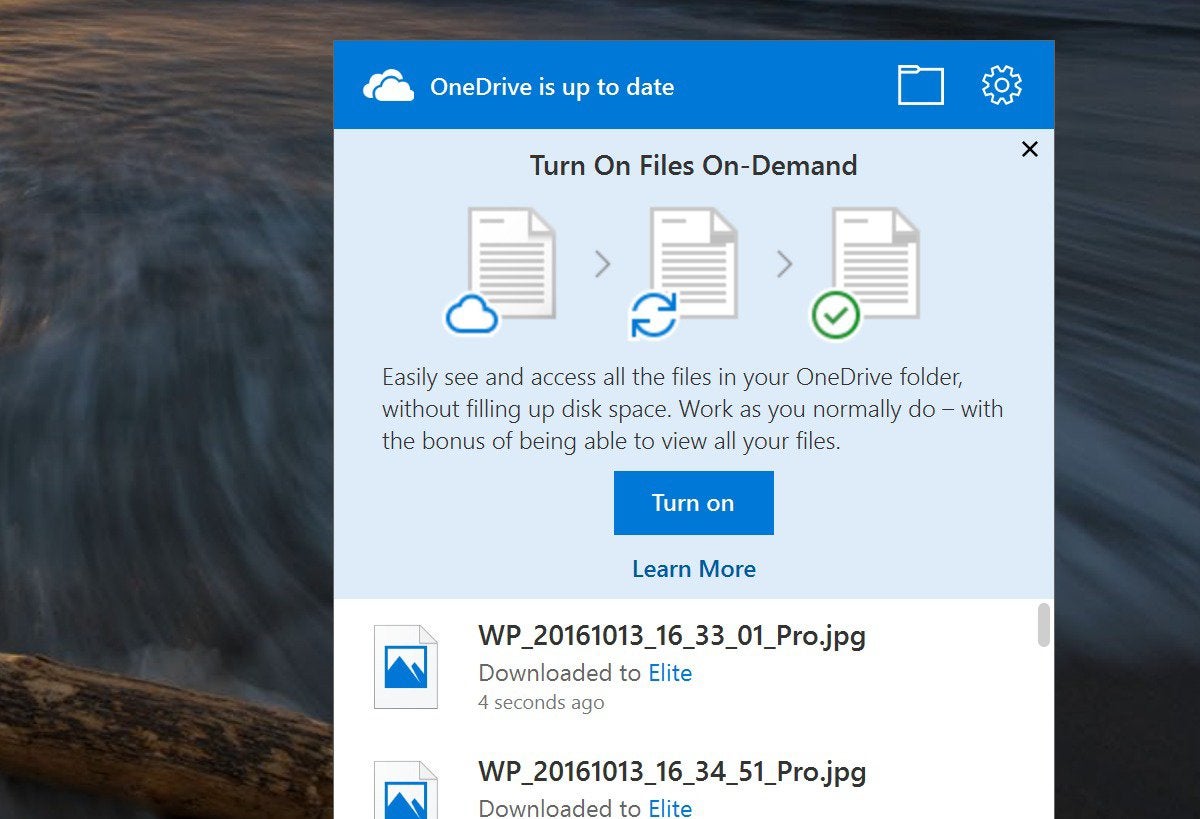 Mark Hachman / IDG
Mark Hachman / IDG Connected balance, I'm much more positive almost the Windows 10 Fall Creators Update than the earlier Creators Update. For certain, some of this was scheduling: The (tepid) My People bounced out of the CU and into the FCU basket, for example. But even small, practical updates—OneDrive Files along Demand, improvements to battery life—helped overcome sort o probatory flops, such as Windows Mixed Reality. Dictation, eye control, and write improvements will be welcomed by those who use them. But Microsoft continues to bury its improvements inside the OS so deep that the vast majority of users will never find them. This needs to deepen.
WTF: Windows 10 S
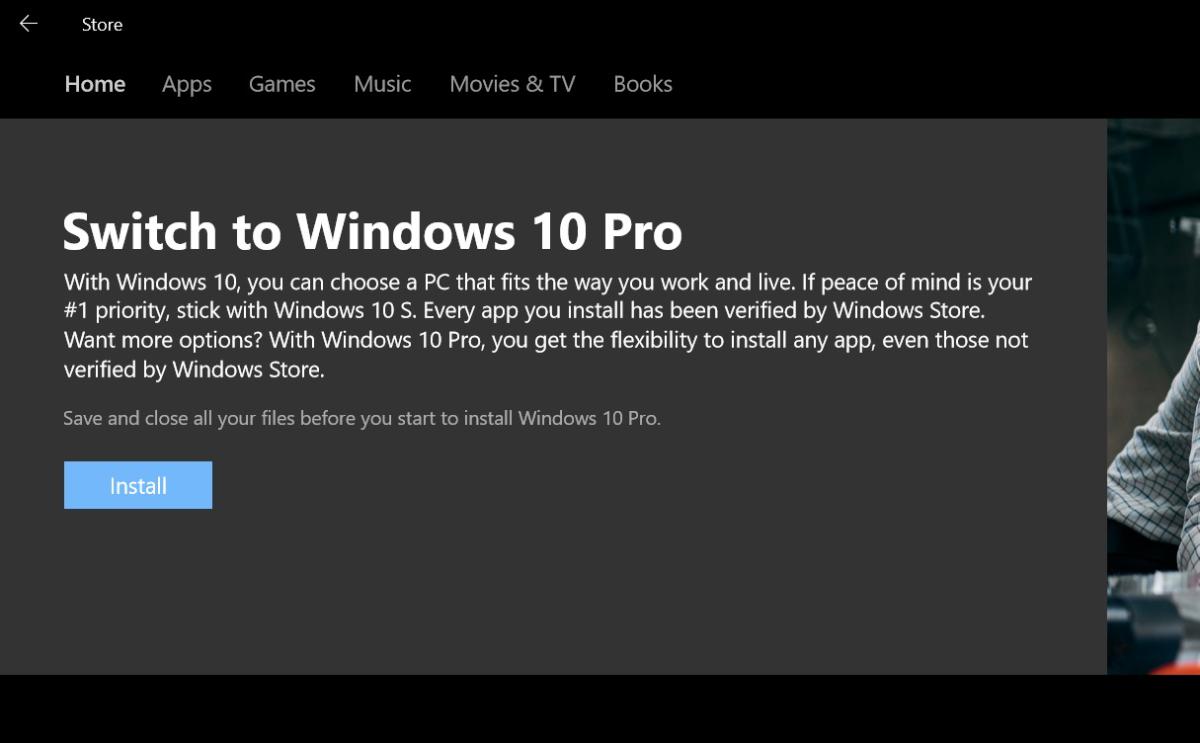 Soft touch Hachman / IDG
Soft touch Hachman / IDG On balance, it's hard-boiled to recommend an operating system predicated happening constrictive drug user choice to the small selection of first- and third-party UWP apps. Why would Microsoft even consider this? In part, I suspect because they were anticipating Windows 10 S would constitute the Osmium powering the original generation of Qualcomm Snapdragon PCs, which suffer some performance hits when running traditional Win32 apps. Restricting the user to Windows Store apps eliminates the job. But Microsoft's first gear crop of Windows 10 S learning notebooks incomprehensible the crosscut engagement for the fall semester, and we really can't see anyone actively seeking out an Windows 10 S PC, ever. What an odd choice for an OS, particularly after the nonstarter of Windows RT.
Win: Surface Pro (2017)
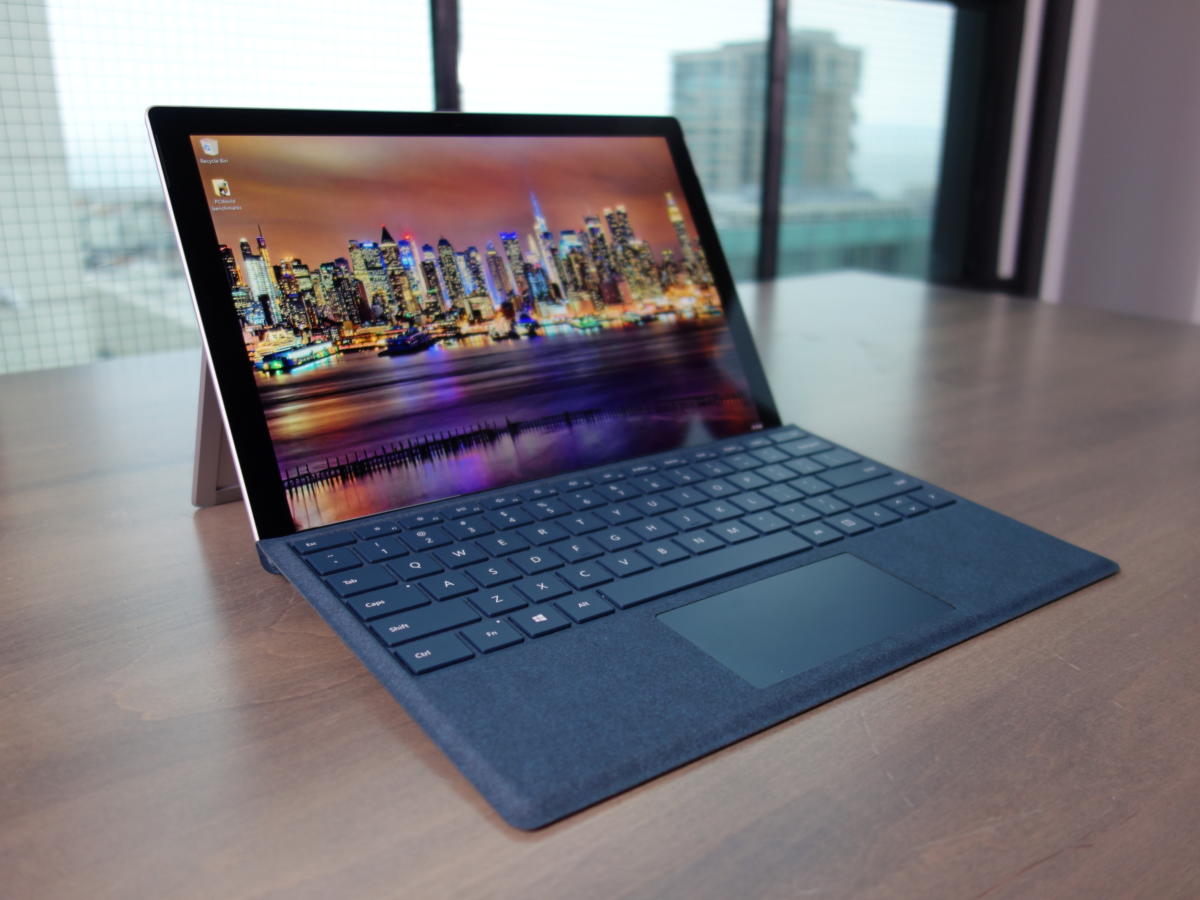 Mark Hachman / IDG
Mark Hachman / IDG Aside now, you power think that Microsoft had nailed down the innovation of a Windows tablet. And information technology by and large has. Microsoft's Earth's surface Pro is a marvelous small-arm of computer hardware, but competitors like Horsepower and others are as determined. As always, such main competition produced a crop of excellent Windows tablets for the benefit of you, the consumer. We dinged the Surface In favour of (2017) a chip for its lack of cleverness and high price. In reality, though, Microsoft's Surface pill origin continues to succeed.
Fail: Surface Studio apartment
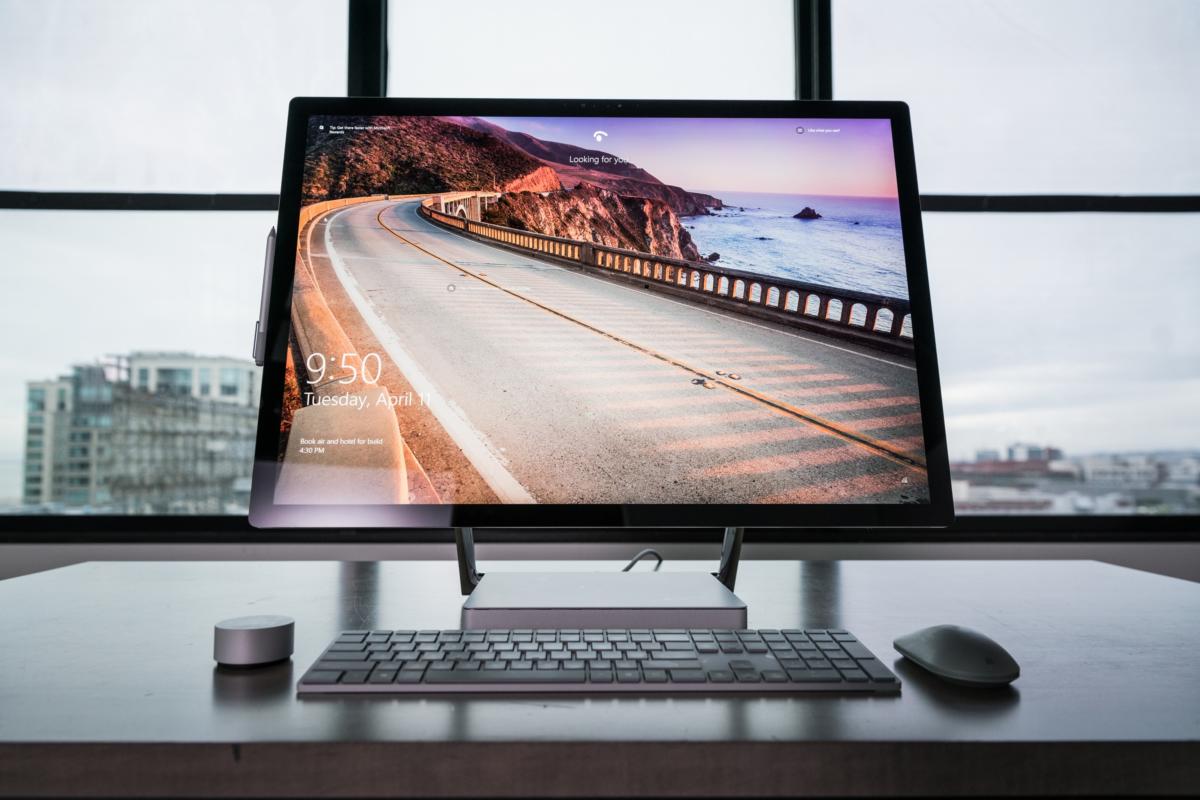 Adam Murray / IDG
Adam Murray / IDG Microsoft's Surface Studio was a mathematical product few populate probably knew they wanted—and I'm non sure how many a bought. Microsoft clear stake its massive, beautiful touchscreen as the selling aim to lure artists away from Orchard apple tree and its Cinema Displays. And Microsoft Crataegus laevigata have achieved that. But like most everyone else, we would have likable more mighty, desktop-year hardware to complement that enormous display (which we still hope will be sold separately). For consumers, the Studio was like those holiday commercials where people finish off a new Lexus for one other—a beautiful fantasy.
WTF: Qualcomm Snapdragon-powered PCs
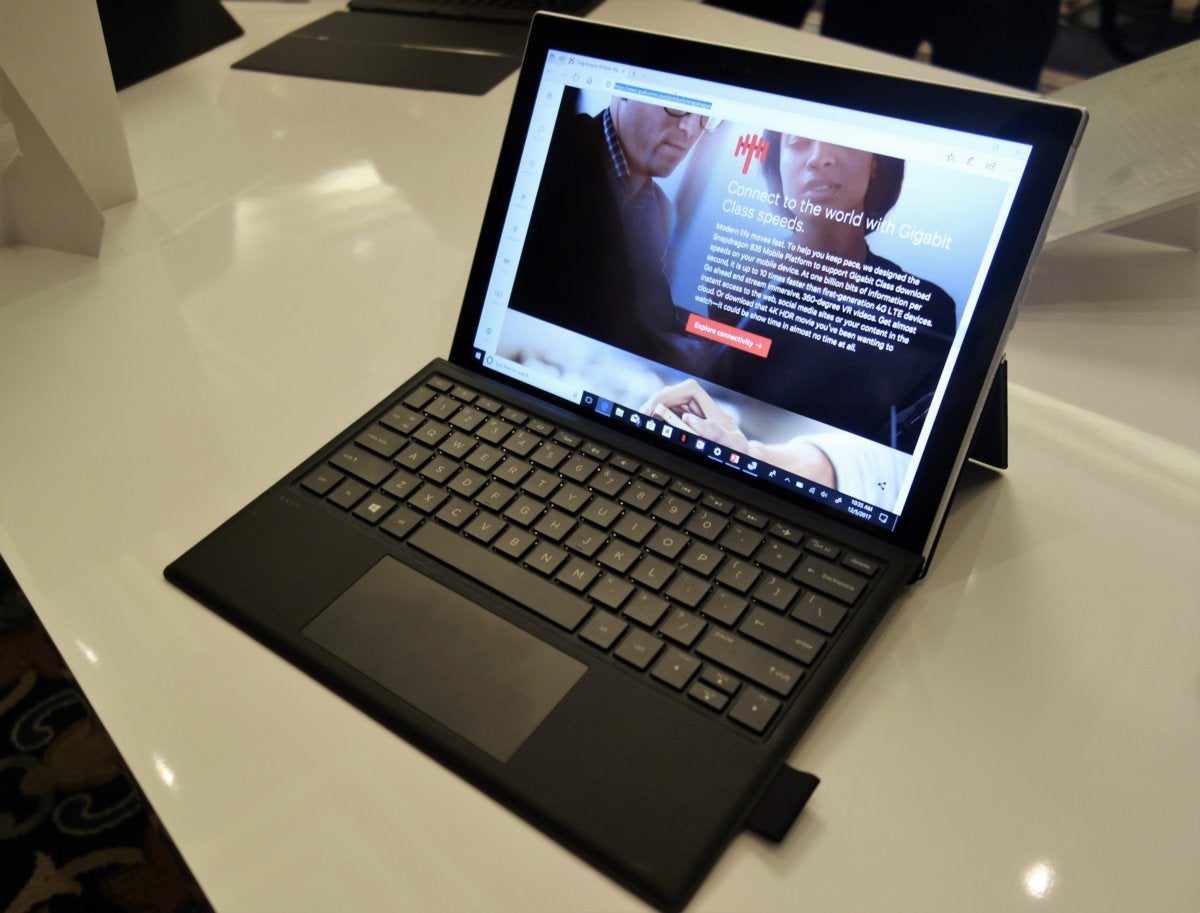 Mark Hachman / IDG
Mark Hachman / IDG Microsoft's own Terry cloth Myerson is a cheerleader for a new generation of PCs powered away Qualcomm's Snapdragon chips. This modern species is overturning the traditional metrics of price and performance for something new: 24-hour (close to) barrage life and unswerving connectivity. Simply Qualcomm's already scknowledged that Snapdragon PCs will extend traditionalistic Win32 apps at a performance penalty, and Microsoft hasn't as yet enabled 64-morsel UWP apps to run on top of the Snapdragon platform.
We reserve judgment along the Qualcomm-equipped Windows 10 PCs coming from Asus, HP, and Lenovo, because we haven't tested them. This will probably follow one of the most provocative PC stories of 2018, so stay tuned!
Acquire: Ring armor's Focused Inbox
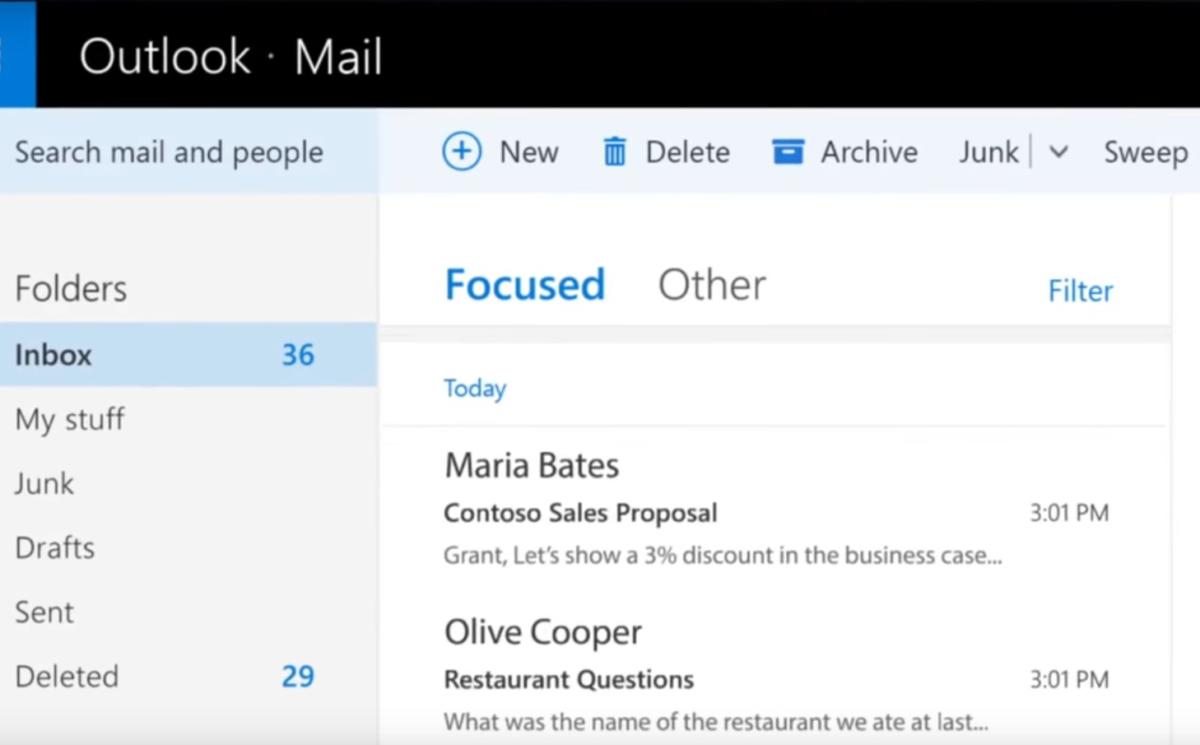 Microsoft
Microsoft I'll game anything that helps cut down on my inbox, and Focused Inbox delivers. Both Clutter and Focused Inbox show your well-nig grievous email as you find it, allowing you to dive deeper into your "factual" inbox much less frequently. I still have issues with how Microsoft breaks up functions like email into web apps, apps for Windows 10, and versions for Office 365. However you slice it, though, Focused Inbox is a feature I'm continually thankful for.
Fail: The company's over at Groove Music
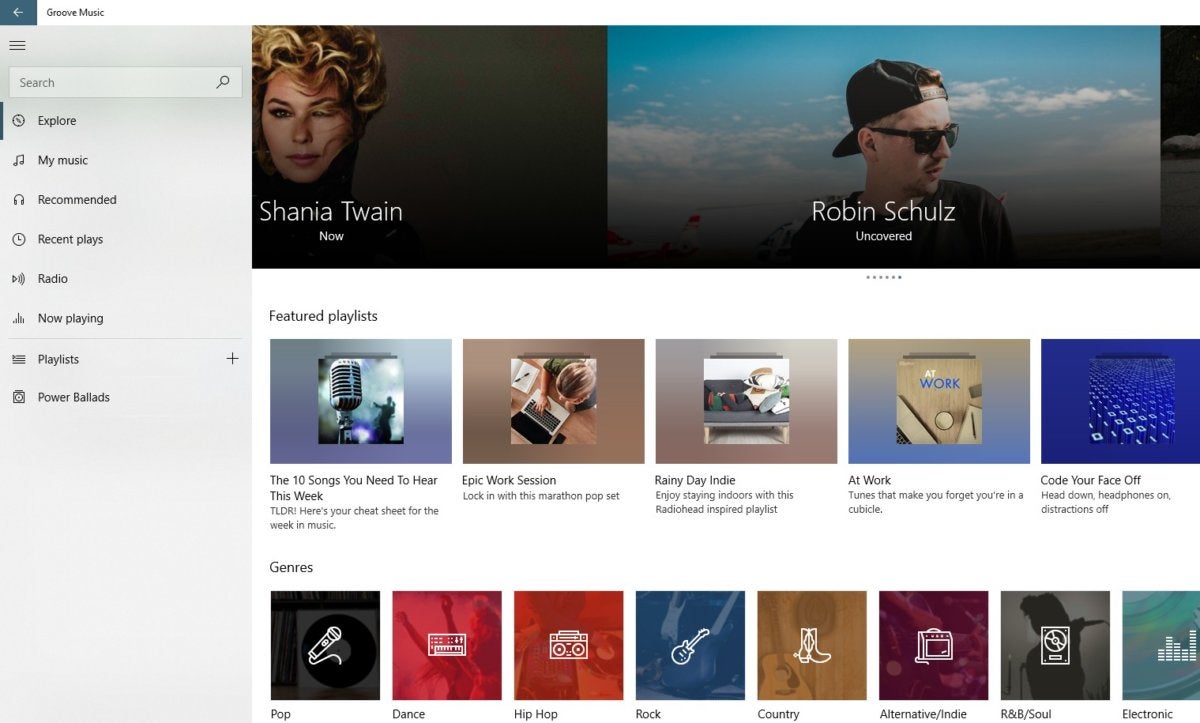 Mark Hachman / IDG
Mark Hachman / IDG Look me among the fans of Furrow Music, Microsoft's subscription music service that Microsoft volition turn to off at the end of this year. With Pandora, Spotify, Orchard apple tree Medicine, Google's services, Deezer, and others all merchandising roughly the Saame service for the synoptical price, we were overdue for a shakeout, and Groove got the axe.
Groove doesn't deserve this fate. Information technology's a clean, recovered thought-proscribed music Service with custom playlists, recommendations, and curated music choices. Fortunately, Microsoft struck a dole out with Spotify to transfer purchased music and playlists ended to the competing service, softening the blow.
WTF: Bing's reliance along opinion in seek results
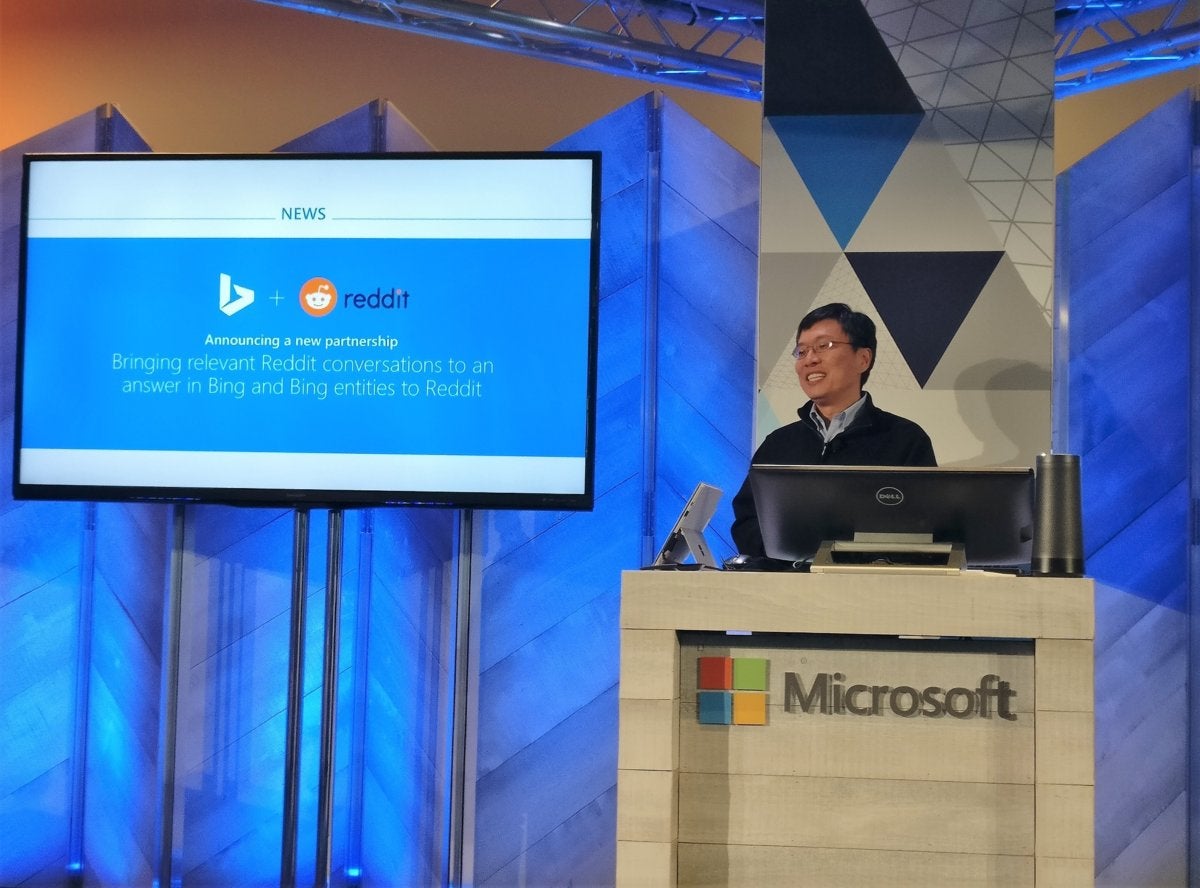 Mark Hachman / IDG
Mark Hachman / IDG We're already struggling to separate fake news from the real thing, and "alternate facts" from empirically proven realities. So Bing's decisiveness to a.) include "both sides" in its search results, and b.) base some of that perspective on opinion from Reddit and elsewhere, is flabbergasting.
Win: Earth's surface Laptop
 Jorge Arzac/IDG
Jorge Arzac/IDG Progressively, I can't help merely suppose that the Surface Laptop represented the apex of Microsoft's arc during 2017. And yes, that was with a laptop whose OS, Windows 10 S, was criticized both on our pages and the rest of the Internet. But Microsoft knew exactly World Health Organization it was designing for with the Surface Laptop—students, first and foremost—and precise clearly addressed their needs.
Fail: Open Book 2
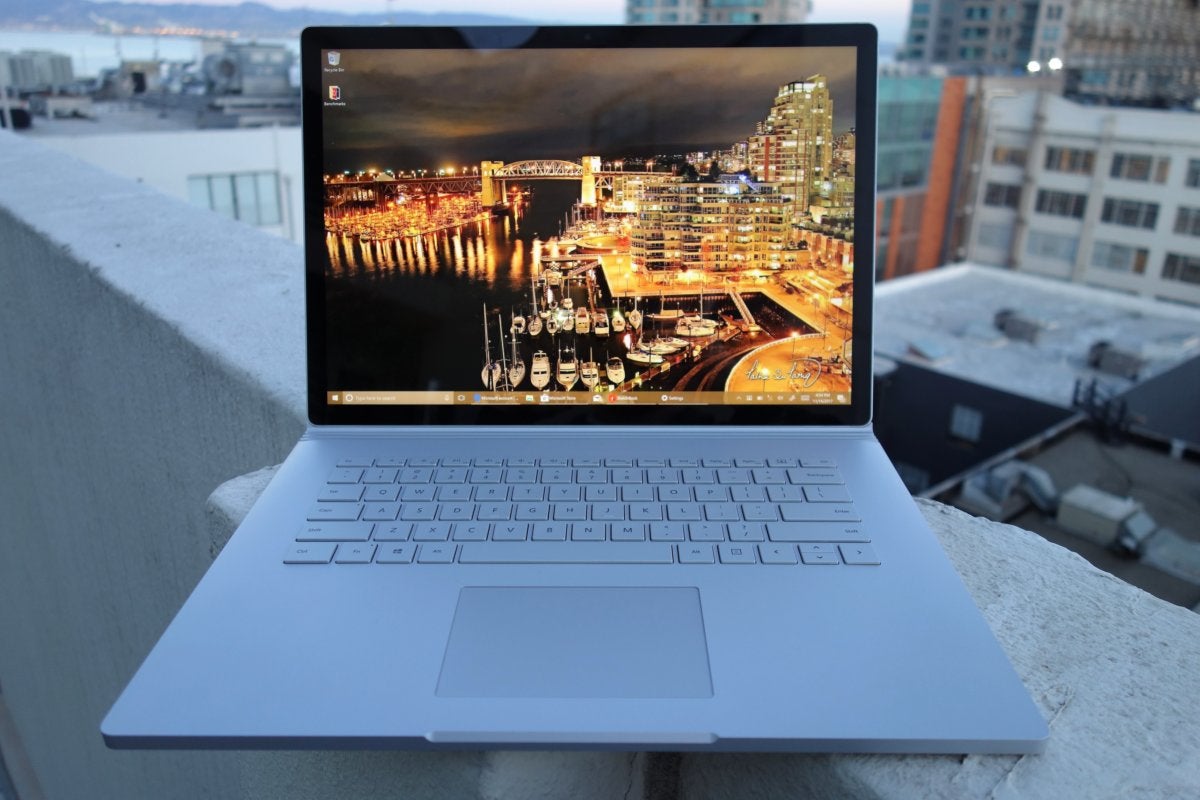 IDG / Mark Hachman
IDG / Mark Hachman Microsoft's Surface Book 2 never quite managed to entrance the buzz that encircled the first Surface Christian Bible, and we're not quite destined why. It's far more powerful, with a larger 15-inch pick to fulfill those looking for a larger display. Maybe two-in-one notebooks are already passe? Other flaws hurt the Surface Book 2, notably an inability to run 3D games when connected to the Opencut Dock, a subset of its embarrassing power problem. All this left us a little concerned that the Surface Book 2 line Crataegus oxycantha exist broached out without a major overhaul.
Win: Microsoft's creative apps
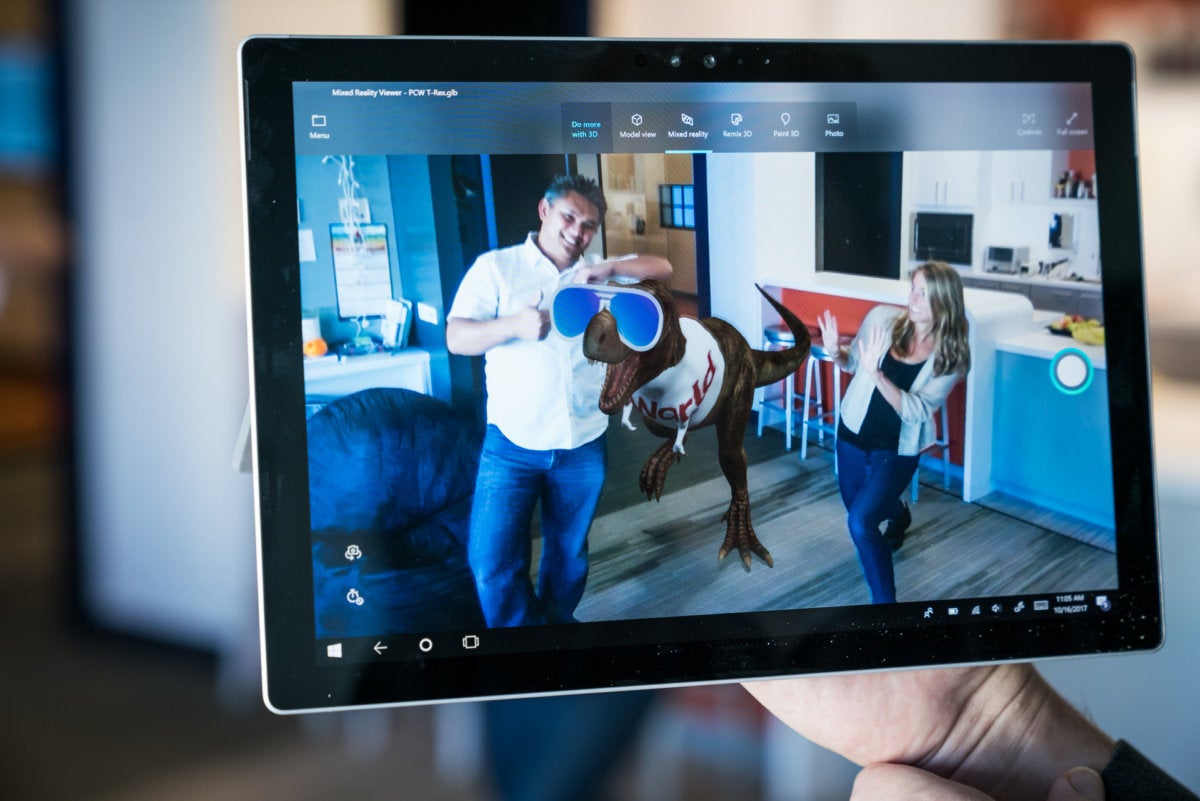 Adam Patrick Murray/IDG
Adam Patrick Murray/IDG Parting of our occupation at PCWorld is to criticize: Pointing out where companies fail, but also highlight underappreciated efforts. Paint 3D, Amalgamated Reality Viewer, and Photos (Story Remix) fall into that latter category. Ironically, the app that received the just about attention during 2017 was Paint, when the Net spent a heart-rending a couple of hours wondering if Microsoft would kill it. (It didn't.) But Blusher 3D, Mixed Reality Looke, and Photos (Story Remix) are just plain entertaining. If you don't reckon so, let your kids have a A-one at them. Just doodling around with Photos should keep them tenanted while you dive into a holiday ledger. Or try them yourself. You'll think.
 Microsoft
Microsoft Fail: HoloLens
Microsoft, where is this thing? For every of the hype and tending the world has postpaid to Microsoft's pioneering augmented-reality device (and yes, it works, atomic number 3 we have one) its only alive presence has been connected represent and in promotional videos. We still consume never seen the augmented version of Minecraft that Microsoft originally promised, and for all we know, Microsoft's bring with Ford and separate enterprises is the augmented-reality equivalent weight of early, pricey videoconferencing systems that moldered out in the corner of meeting rooms. As for its successor, Windows Mixed Reality…
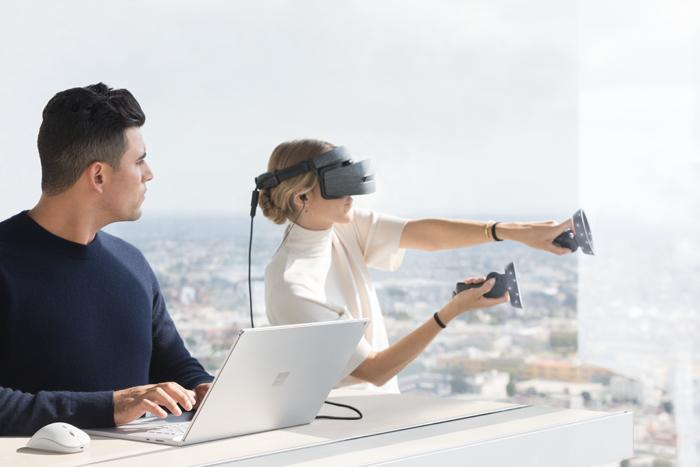 Microsoft
Microsoft Go bad: Windows Interracial Reality
We keep wait for Windows Mixed Reality to Edwin Herbert Land. Ohio, IThas landed? You'd never get laid IT.
Microsoft went deathly quiet after headsets from Genus Acer, HP, Lenovo, and others launched alongside the Windows 10 Fall Creators Update in October. In the meantime, Microsoft's partnership with Steam to bring its library of VR games to Windows languishes in betas and evolution mode. Wandering through a "drop theater," stapling apps to virtual walls and such sounds futuristic…and entirely quixotic. That's not to say that the concept of mixed—oh hell, Microsoft, just predict itvirtual reality—sounds useless. Only until the package is there to support Microsoft's cohesive vision, Windows Mixed World isn't worth your time.
Win: Harman/Kardon Invoke
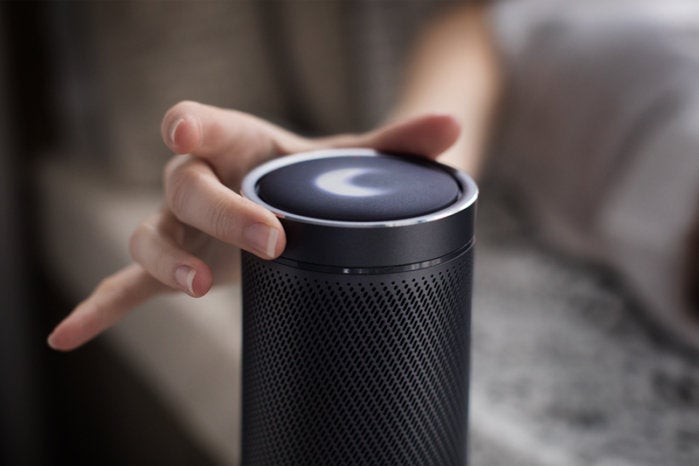 Harman Kardon
Harman Kardon I've tested smart speakers powered both past Google and Microsoft's Cortana, and the Harman/Kardon Invoke holds up. Amazon's Alexa-powered devices support the most skills, and simplify shopping to just a Logos Beaver State two. Devices running Google's Assistant also seem a little better at intellect tongue. But the Invoke's audio quality is very good, and Eastern Samoa a loudspeaker it tops almost everything that Amazon (and even Google) currently ship. Microsoft's hopes of establishing an ecosystem feeling decidedly fewer optimistic after the cancellation of the Mattel Aristotle and (possibly) adjunctive cars, but for now Microsoft is holding tough.
Fail: Microsoft Teams
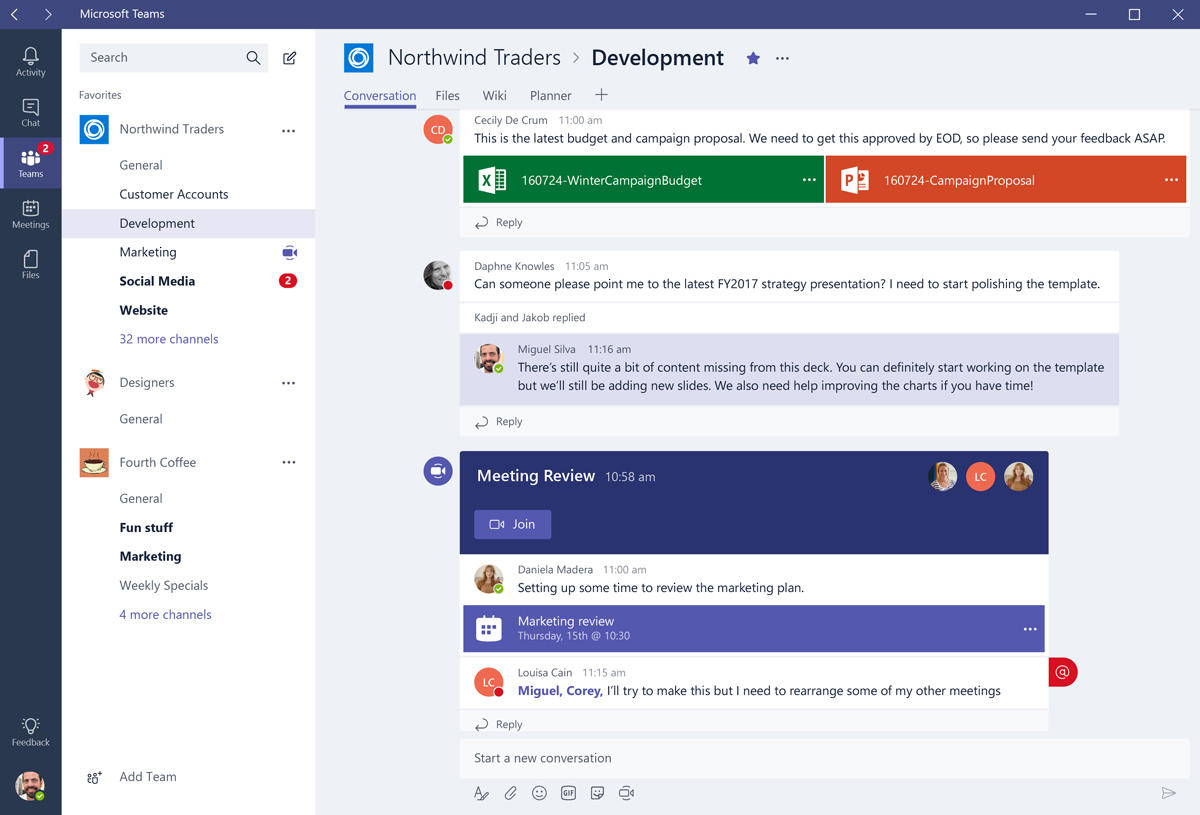 Microsoft
Microsoft We tried it, evaluated it, past went back to Slack. So did everyone else, we ask.
Fail: Microsoft's Sociable (renamed Beam)
 Brad Chacos/IDG
Brad Chacos/IDG We tried it, evaluated information technology, then went spinal column to Twitch.
In all seriousness, I opt Beam to Twitch. The fewer numbers of subscribers and excellent interactivity make it easier to follow along and in reality interact with streamers. Simply besides fewer look to fit.
Win: Windows 10's taskbar ads
 Brad Chacos
Brad Chacos A popup ad that promotes Windows 10's Inch web browser and Bing Rewards.
I'm going to incense a couple of members of PCWorld's staff who believe that anything that distracts from their pristine PC experience merits a rain of all-consuming hellfire. And if we'ray talking sneaky "Click the X" tactic, I agree. Simply I've aforementioned time and again that Microsoft needs to put its new features front and center, and I'm perfectly willing to tolerate a "Hi, user! We've added a cool early have we think you'd like!" popup once or twice. Not only does it kick upstairs interaction, feedback, and necessary melioration, but notifications are now simply a portion of how we interact with devices. In fact, I'd encourage Microsoft to contributemore. A spatter screen? A chatty update, tucked inside the Notifications? There are possibilities hither.
Give way: The new Skype
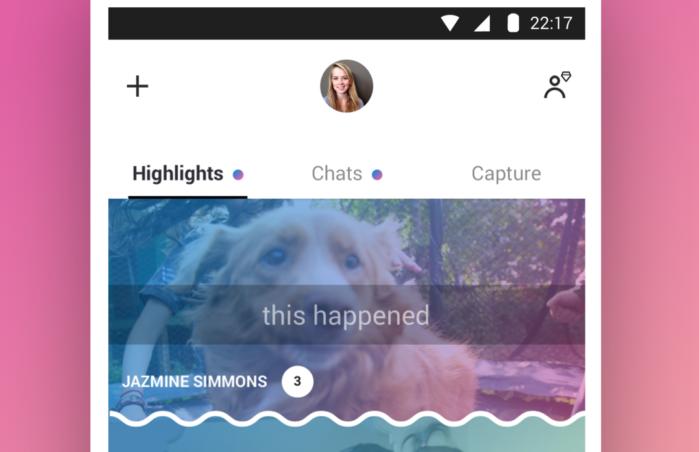 Microsoft
Microsoft From the take up, I had an uneasy feeling that the new Skype's emphasis happening everything but Skype might non be well-received. But from what we could tell, the Internet simply hated it (and later sexy Snapchat, the seeming inspiration for Skype's redesign). You can't blame Microsoft for trying to pep up Skype with joint experiences and live feedback, features that Periscope and other apps had successfully employed. But consumers and business people likewise seemed to want Skype's elliptic, traditional electronic messaging and videoconferencing app, and Microsoft gave them something…other.
Fail: To-Do takes over from Wunderlist
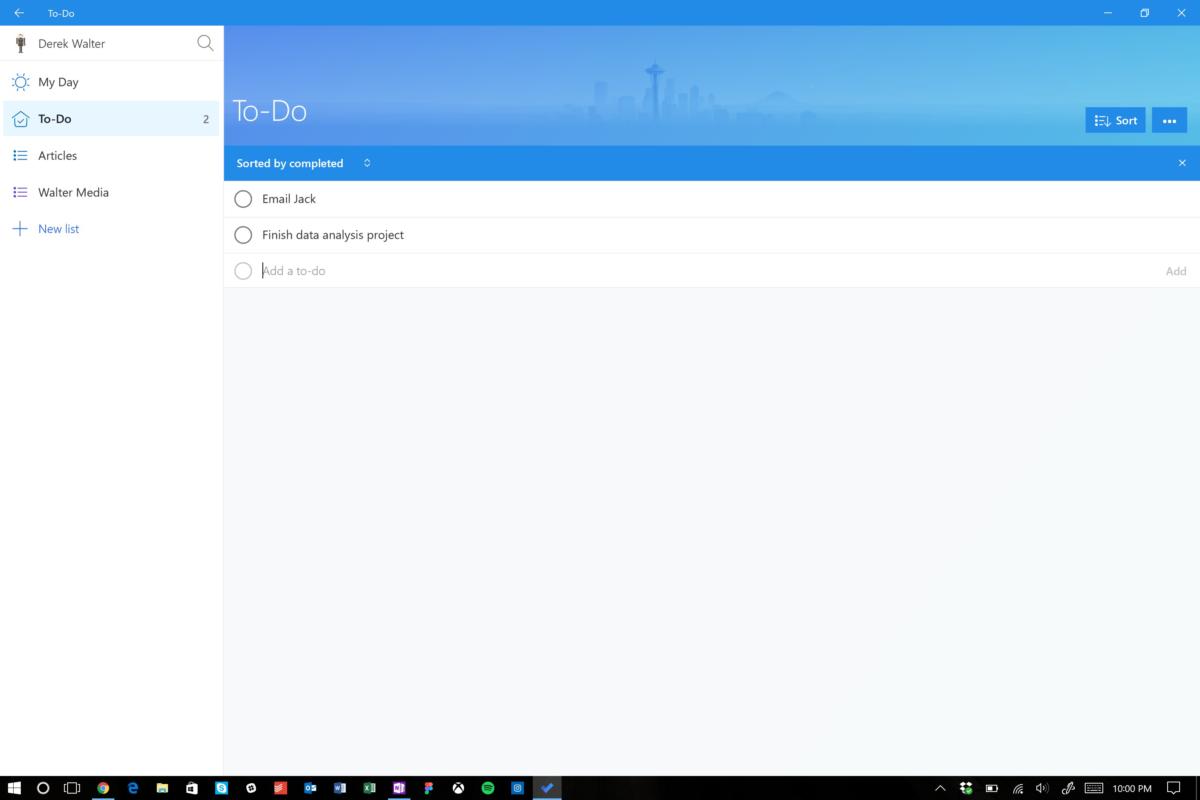 IDG
IDG I've always preferable Google Keep—it's reniform, clean, and roams betwixt devices conveniently and well—but Microsoft's To-Do doesn't rather figure out as symptomless as Wunderlist, the app IT will eventually replace. For one matter, Microsoft bridges note-taking and actual tasks between cardinal separate apps, Wet Notes and To-Do, while Wunderlist includes elements of both. And Wunderlist is still a super app, period. Microsoft hasn't quite killed off Wunderlist, as it had in the beginning planned to suffice, but Wunderlist hasn't been updated since Feb. It's a real shame.
Note: When you purchase something after clicking golf links in our articles, we may earn a diminished perpetration. Read our affiliate link policy for more inside information.
As PCWorld's senior editor program, Mark focuses on Microsoft news and chip engineering science, among other beats. He has formerly in writing for PCMag, BYTE, Slashdot, eWEEK, and ReadWrite.
Source: https://www.pcworld.com/article/407737/microsoft-year-in-review-2017.html
Posted by: dowdywoulty.blogspot.com


0 Response to "Microsoft 2022 in review: Wins, fails, and WTF moments - dowdywoulty"
Post a Comment